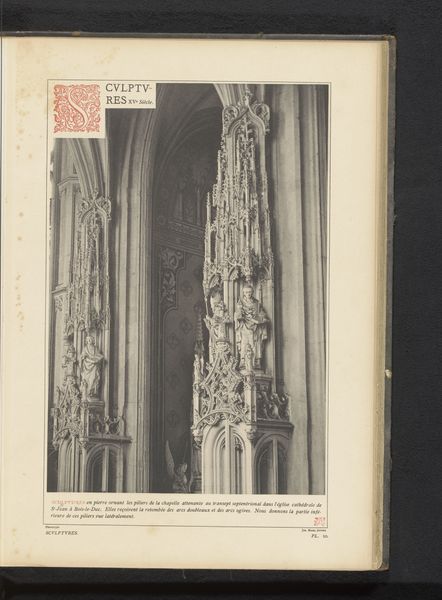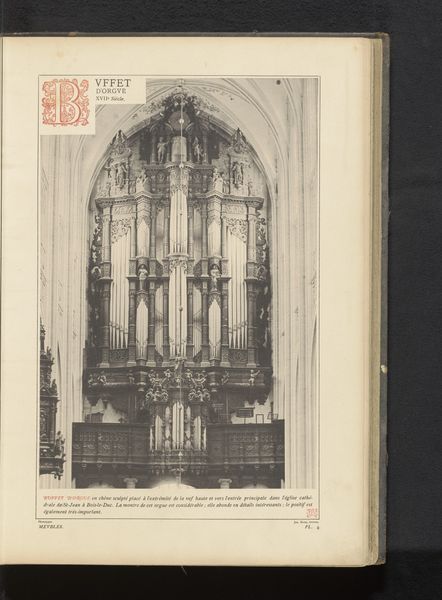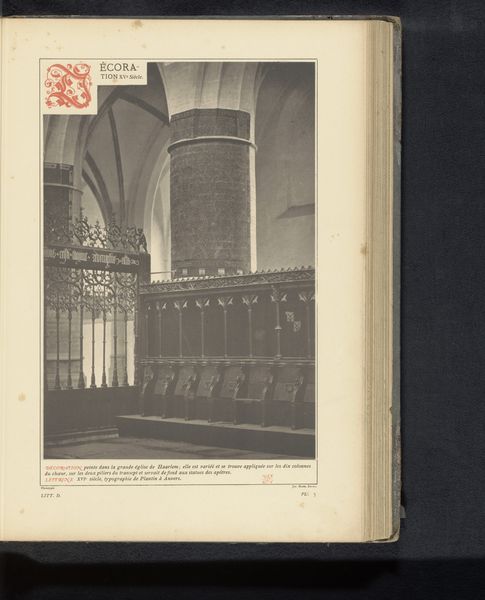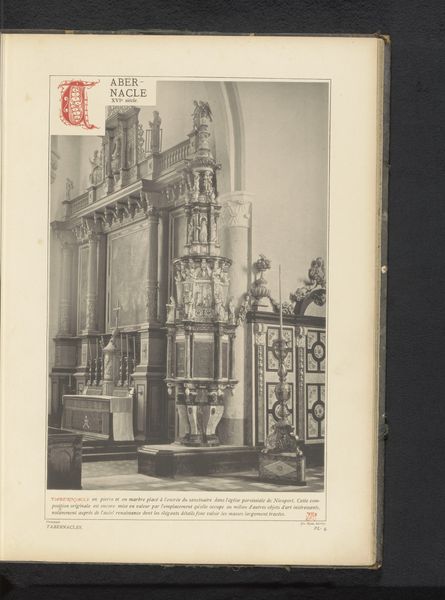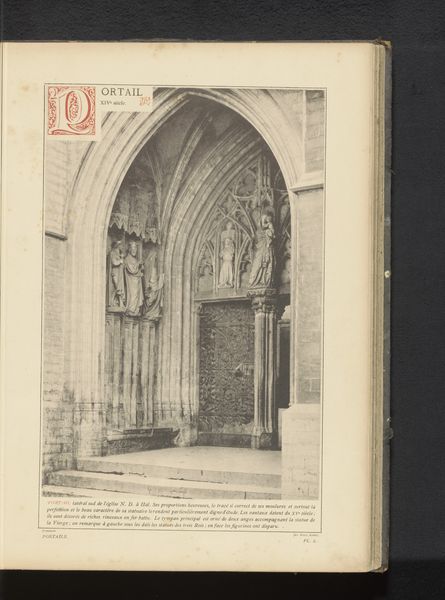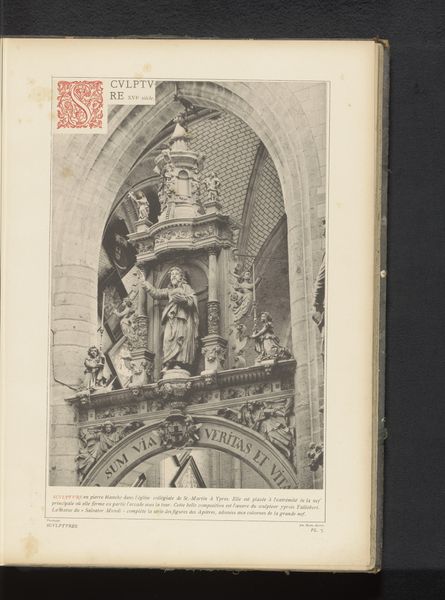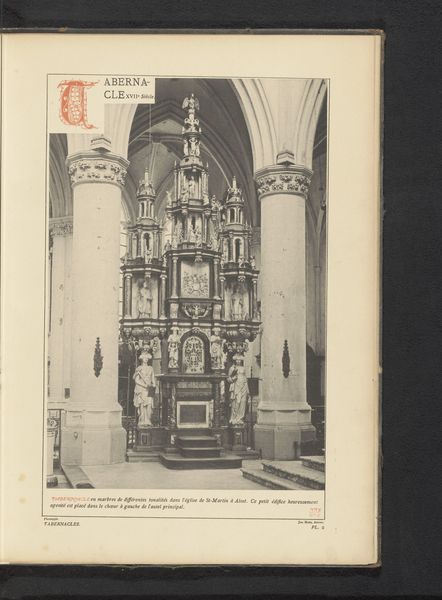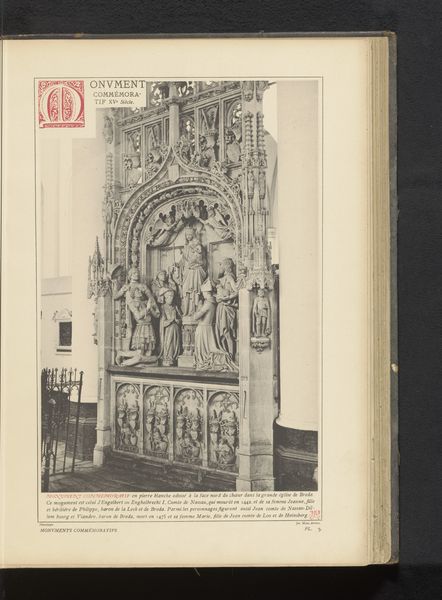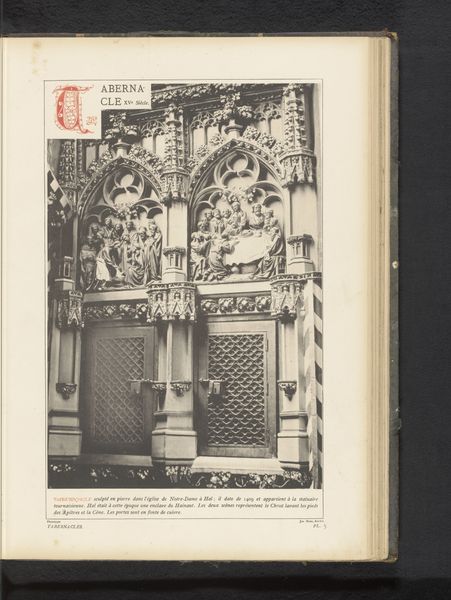
Tabernakel van steen, ontworpen door Gabriel van den Bruyne, in de Sint-Jacobskerk in Leuven, België before 1887
0:00
0:00
#
aged paper
#
homemade paper
#
paper non-digital material
#
paperlike
#
sketch book
#
personal sketchbook
#
folded paper
#
letter paper
#
paper medium
#
historical font
Dimensions: height 339 mm, width 229 mm
Copyright: Rijks Museum: Open Domain
Curator: This is a print of the stone tabernacle designed by Gabriel van den Bruyne, situated in Saint James' Church in Leuven, Belgium. We believe the image was made sometime before 1887. Editor: It's striking. All that detail, encased within the page of a book... it's interesting to see something so grand depicted in such a constrained format. The stark monochrome also speaks to a very functional aesthetic; quite different from the soaring quality that it must exhibit in real life. Curator: It’s certainly more pragmatic in its presentation. This relates, perhaps, to the symbolic meaning, the containment of the sacred… Van den Bruyne's design clearly references Gothic sensibilities and its yearning for a vertical expression. Editor: And you can see this dedication to craft so intensely labored within its framework of stone. What interests me is thinking about the economy surrounding such an object. Who paid for its creation, and whose hands brought the architect’s vision to life? Curator: It represents a visual compendium of faith, not only with its obvious connection to religious worship but its architectural echoes of aspiration. You can’t escape the visual metaphor for divine elevation. Editor: That's fair. I can appreciate how it connects with notions of craft, patronage, and power structures, not solely through sacred or religious symbolism, but of what the artist and artisans were commissioned to do. Curator: Considering how this would have resonated at the time... It's about cultural memory. We view Gothic spires with perhaps too-romantic eyes, while earlier viewers immediately related to established ideas of community identity and spiritual aspiration. Editor: Absolutely, it pushes us to consider what’s literally supporting the creation and consumption of such monumental designs in a particular social-historical context. Thanks for elucidating the religious dimensions! Curator: A worthy exchange, thank you! I shall reflect further upon its physical existence, the "how" behind it as it exists here.
Comments
No comments
Be the first to comment and join the conversation on the ultimate creative platform.

